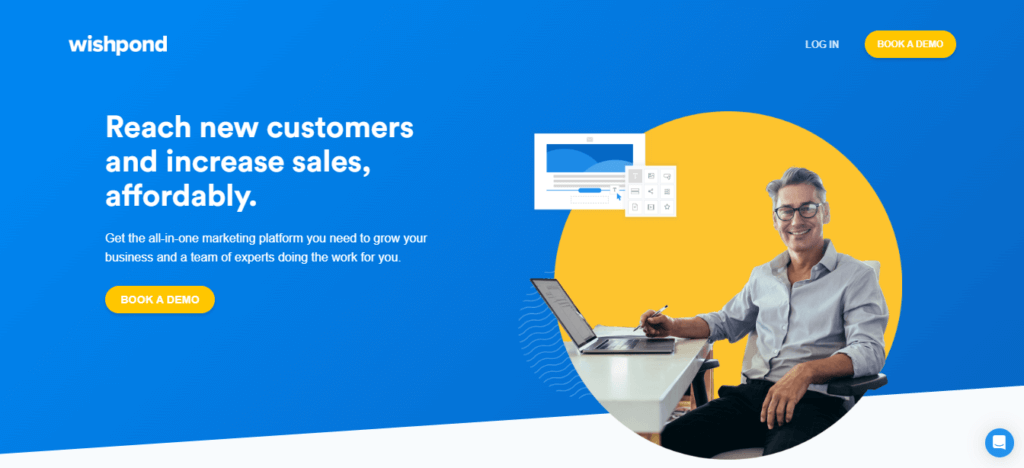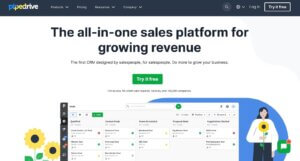In the world of marketing, lead generation is a critical process that drives business growth and revenue. Simply put, it refers to the process of attracting and converting potential customers into qualified leads. Any successful business and marketing strategy depends on the ability of the business to generate leadss.
Effective lead generation can help businesses in many ways, including increasing brand awareness, building relationships with potential customers, and ultimately driving more sales. However, the process to generate leads can be challenging and time-consuming, especially if you don’t know where to start.
In this article, we will explore 10 proven strategies for effective lead generation. These strategies are designed to help businesses of all sizes generate high-quality leads and drive growth.
Whether you’re just getting started with lead generation or looking to optimize your existing strategy, these tips will help you achieve your goals and take your business to the next level.
Know Your Target Audience
One of the most important aspects of effective lead generation is understanding your target audience. Gaining a clear understanding of who your ideal customer enables you to create tailored marketing strategies that resonate with them, preventing wasted time, money, and resources on campaigns that miss the mark.
Here are some steps to help you get to know your target audience and craft more targeted and valuable content:
Conduct market research
Begin by researching your industry and competitors. Identify current trends, challenges, and pain points that your target audience faces.
Analyze the solutions your competitors offer and determine how you can differentiate yourself in the market.
Utilize resources such as industry reports, social media platforms, and online forums to gather valuable insights into your target audience’s preferences and behaviors.
Develop buyer personas
Use the insights from your market research to create detailed buyer personas, which are semi-fictional representations of your ideal customers.
These personas should include demographic information, such as age, gender, and location, as well as psychographic information, such as values, interests, and challenges.
By developing buyer personas, you can better understand your customers’ needs, motivations, and decision-making processes, helping you create more targeted marketing campaigns.
Understand the buyer’s journey
Map out the different stages of the buyer’s journey, from awareness to consideration and, ultimately, to purchase.
Identifying the touchpoints at each stage allows you to engage with your target audience effectively and convert leads into customers.
Tailor your content and marketing strategies to address the specific needs, questions, and concerns of your audience at each stage of the journey.
Monitor and adapt
Continuously monitor the performance of your marketing campaigns, gather feedback from your audience, and adjust your strategies accordingly.
Keep up-to-date with industry trends, and be ready to adapt to changes in customer preferences and market conditions. This will ensure that your lead-generation efforts remain relevant and valuable to your target audience.
By understanding your target audience, you can tailor your lead generation strategies to meet their specific needs and preferences, ultimately driving more conversions and revenue for your business. This approach also helps create a more personalized and meaningful connection with your audience, fostering loyalty and long-term customer relationships.
Create a Strong Value Proposition
When it comes to lead generation, creating a strong value proposition is essential. A value proposition is a statement that clearly outlines what your business offers and how it solves your target audience’s problems.
To create a strong value proposition, it’s important to understand your target audience’s pain points and needs.
Once you’ve identified these, you can craft a compelling message that resonates with your audience and sets you apart from the competition.
When creating your value proposition, focus on the benefits your product or service offers, rather than just its features. Use language that speaks directly to your target audience and clearly communicates the value you provide.
Here are some examples:

In each of these value propositions:
- Uber emphasizes the convenience and control users have over their own day with their service.
- Slack offers a central platform where all work-related activities can occur.
- Dropbox underlines safety, synchronization, and sharing – addressing common pain points for users who need to handle files.
- Airbnb offers a unique travel experience by allowing users to book unique accommodations and activities.
- Evernote presents a solution to forgetting important details, appealing to anyone who needs to keep track of numerous tasks or notes.
There are tools that you can use to help you create your own value proposition.
Unbounce provides templates and tools for creating effective landing pages with clear value propositions that can help you convert leads into customers. By taking the time to craft a strong value proposition, you can set your business up for success in lead generation.
Optimize Your Website to Generate Leads
When it comes to lead generation, optimizing your website can play a critical role in capturing the attention of potential customers and converting them into leads. To achieve this, you must first focus on your website’s landing pages, CTAs, and forms.
Landing pages are an important element of any lead generation strategy. They should be optimized to provide a clear value proposition and a compelling offer.
Use eye-catching design elements and make sure your copy is concise, engaging, and easy to understand. By doing so, you will create a strong first impression and increase the likelihood of visitors converting into leads.
CTAs, or calls-to-action, are an essential component of lead generation as they guide visitors to take the desired action on your website. Ensure that your CTAs are clearly visible and placed in strategic locations throughout your site. Use action-oriented language to encourage visitors to take the next step.
Forms are the final piece of the puzzle. Make sure they are easy to complete and ask only for the information that is necessary to move leads down the funnel.
Reduce the number of fields if possible, as this can increase the completion rate. Test different variations of your forms to find the most effective format for your audience.
In addition to these tips, using tools like Wishpond or Leadpages can help you optimize your landing pages, CTAs, and forms. These tools offer templates and design features that can help you create high-converting pages in a matter of minutes.

Use Content Marketing
Content marketing is a strategic approach to creating and distributing valuable, relevant, and consistent content to attract and retain a clearly defined audience. It can be a powerful tool for generating leads by providing your target audience with useful and informative content that addresses their pain points and interests.
To use content marketing effectively for lead generation, it’s important to:
- Define your target audience: Understand your audience’s needs, challenges, and interests, and create content that speaks to them specifically.
- Create valuable and engaging content: Develop content that offers unique insights, actionable tips, and expert opinions on topics that matter to your audience. This can include blog posts, videos, e-books, webinars, and more.
- Use targeted promotion: Use social media, email marketing, and other channels to promote your content to your target audience. You can also use paid promotion, such as Google Ads or Facebook Ads, to reach a wider audience.
- Optimize your content for lead capture: Include calls-to-action (CTAs) and lead capture forms within your content to encourage readers to take action and provide their contact information.
By using content marketing, you can establish your brand as a trusted authority and attract potential customers to your website. By providing valuable content that addresses their needs, you can build trust and credibility with your audience and increase the likelihood of them becoming a lead or customer.
Leverage Social Media
Social media platforms can be powerful tools for generating leads and reaching a wider audience. Here are some tips on how to effectively leverage social media for lead generation:
- Choose the right platforms: It’s important to identify which social media platforms your target audience uses most frequently and focus your efforts on those channels.
- Optimize your profiles: Make sure your social media profiles are complete and up-to-date with relevant information about your business, including a clear description, website link, and contact information.
- Create engaging content: Share relevant and valuable content that resonates with your target audience, such as blog posts, infographics, and videos.
- Engage with your audience: Encourage engagement by responding to comments and messages in a timely manner, and by asking questions and soliciting feedback.
- Use social media ads: Consider using social media advertising to target specific audiences and drive traffic to your website or landing pages.
By effectively leveraging social media, you can reach a wider audience and generate more leads for your business.
Host Webinars and Events
Hosting webinars and events can be an effective lead generation strategy. It’s an opportunity to showcase your brand’s expertise and value, and provide your target audience with valuable insights and resources. Here are some tips on how to plan and execute successful webinars and events:
- Define your objectives: Identify the goal of your webinar or event, whether it’s to generate leads, build brand awareness, or educate your audience.
- Choose a topic: Select a topic that is relevant to your target audience and aligns with your business objectives. Make sure it is something that will be of interest and value to your audience.
- Select a platform: Choose a platform that aligns with your needs and budget. Consider factors such as the number of attendees, ease of use, and integration with your marketing automation tools.
- Promote your webinar or event: Use social media, email marketing, and other channels to promote your webinar or event. Make sure to communicate the value proposition and benefits of attending.
- Prepare your content: Develop a compelling presentation that engages your audience and provides valuable insights and information. Make sure to include a strong call-to-action to encourage attendees to take the next step.
- Follow up with attendees: After the event, follow up with attendees to thank them for attending and provide additional resources or information. Use this opportunity to continue nurturing the relationship and driving conversions.
By following these tips, you can plan and execute successful webinars and events that generate leads and drive business growth.
Use Paid Advertising
Paid advertising can be an effective way to generate leads and reach your target audience. There are a variety of paid advertising channels available, such as Google Ads, Facebook Ads, LinkedIn Ads, and more.
To effectively use paid advertising for lead generation, it is important to:
- Know your target audience and choose the right platform: Before starting any paid advertising campaign, it is crucial to identify your target audience and choose the right platform to reach them. Different platforms have different targeting options and features, so selecting the right one is essential.
- Create compelling ad copy and visuals: Your ad copy and visuals should be attention-grabbing, relevant to your target audience, and highlight your value proposition. Use A/B testing to determine the most effective ad creative.
- Set a clear call-to-action: Your ad should have a clear and compelling call-to-action (CTA) that encourages users to take action, such as signing up for a newsletter or filling out a form.
- Monitor and optimize your campaigns: Regularly monitor the performance of your paid advertising campaigns and adjust your targeting, ad creative, and bidding strategy as needed to optimize results and reduce costs.
By effectively using paid advertising, you can reach a wider audience and generate more leads for your business.
Measure and Analyze Results
Generating leads is only the first step in a successful lead generation strategy.
To ensure the success of your efforts, it’s essential to measure and analyze the results of your campaigns. This will allow you to identify what works and what doesn’t, so you can optimize your strategies for better results.
To start, it’s important to identify the key metrics you need to track, such as conversion rates, click-through rates, and cost per lead. By analyzing these metrics, you can determine the effectiveness of your campaigns and make data-driven decisions to improve them.
There are various tools you can use to track and analyze your data. Google Analytics, for example, is a free tool that provides detailed insights into website traffic and user behavior.
Marketing automation platforms like HubSpot and Marketo also offer robust analytics capabilities to track and analyze lead generation efforts.
In addition to tracking metrics, it’s important to continually test and refine your strategies to optimize results.
A/B testing, for example, allows you to test different variations of your campaigns to see which performs best. By continually analyzing and optimizing your lead generation strategies, you can ensure you’re getting the best possible results from your efforts.
At Mapplinks, we understand the importance of measuring and analyzing results to ensure the success of your lead generation campaigns. That’s why we provide our clients with detailed reports and insights into their campaigns, so they can make data-driven decisions to optimize their strategies and drive better results.
Start Generating Quality Leads Today
Generating high-quality leads is essential for any business looking to grow and thrive in today’s competitive market.
We’ve discussed ten proven strategies for effective lead generation that can help businesses of all sizes generate more leads and drive revenue growth.
We started by emphasizing the importance of understanding your target audience and creating a strong value proposition to generate quality leads.
From there, we covered a range of lead generation strategies, including optimizing your website, leveraging social media, using email marketing, hosting webinars and events, and utilizing paid advertising.
One of the key takeaways from this article is the importance of measuring and analyzing lead generation efforts to continuously improve and optimize strategies.
At Mapplinks, we know that generating high-quality leads can be challenging for businesses. That’s why we offer a range of services, such as email marketing, social media management, and paid advertising, to help our clients generate more leads and grow their revenue.
Additionally, we understand that measuring and analyzing results is crucial in ensuring the success of lead generation campaigns.
We provide detailed reports and insights into their campaigns to help our clients make data-driven decisions and optimize their strategies.
If you want to hire professionals to generate leads for your business, contact us today to learn more about how Mapplinks can help your business succeed.



